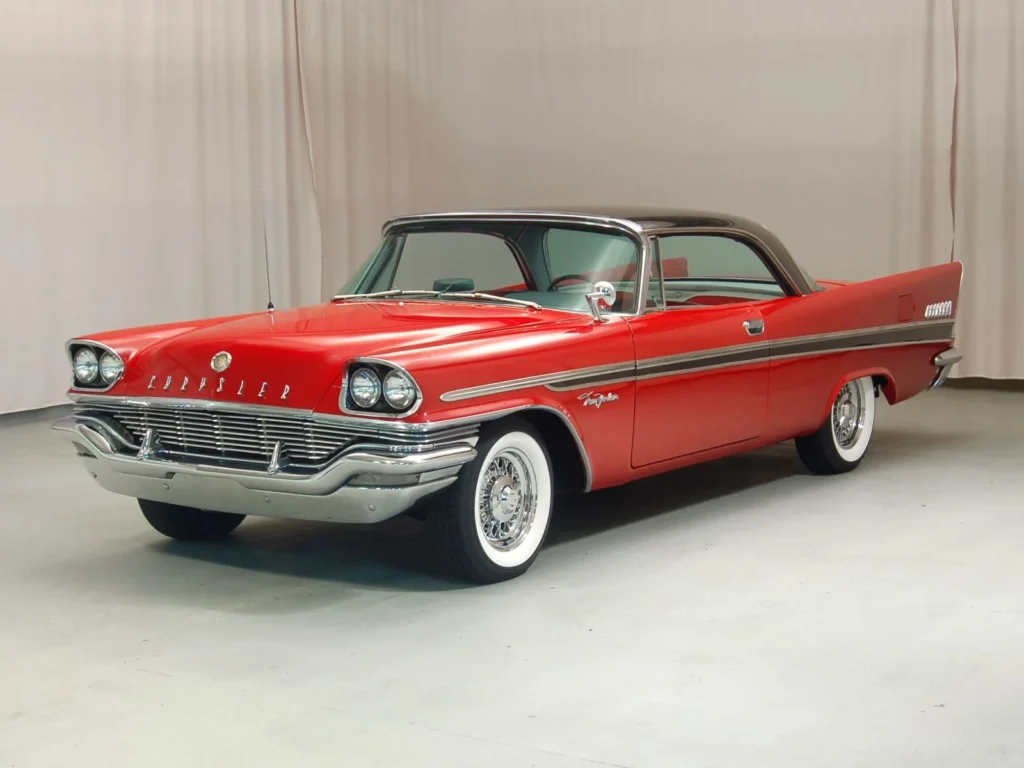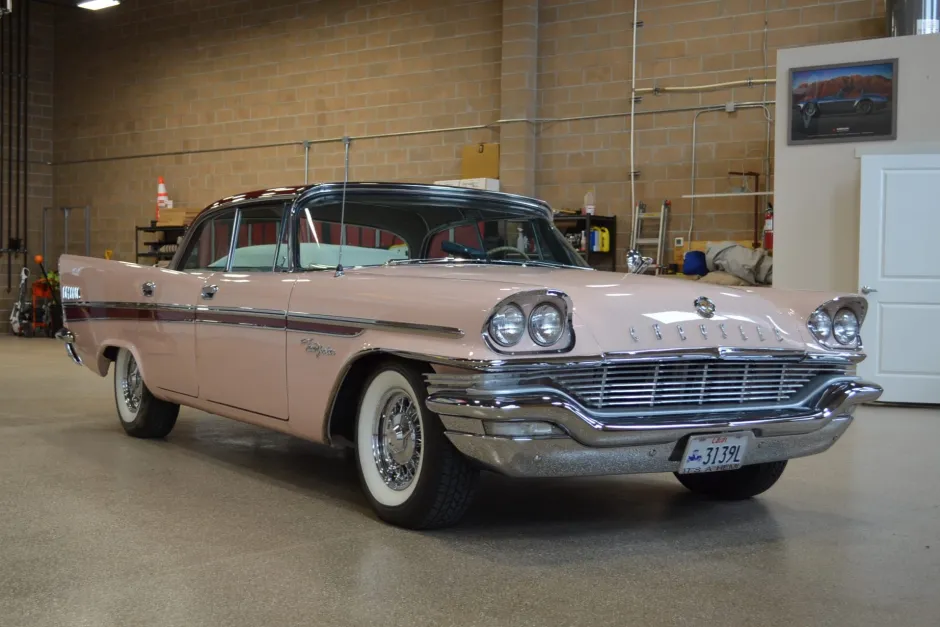The Chrysler New Yorker is one of the most legendary names in American automotive history. From its introduction in 1939 to its final model in 1996, this luxury car defined elegance, comfort, and innovation. It wasn’t just a vehicle — it was a symbol of American pride and craftsmanship.
Across nearly six decades, the Chrysler New Yorker evolved with style and technology, adapting to every new trend while staying true to its luxurious roots. It was the car for those who wanted prestige without being flashy — a smooth, elegant ride that made a powerful statement of success.
The Birth of the Chrysler New Yorker
The story of the Chrysler New Yorker begins in 1939, at a time when America was on the brink of industrial transformation. Chrysler wanted to create a car that could compete directly with Cadillac and Lincoln — two giants of the luxury car segment.
The first New Yorker appeared as a premium version of the Chrysler Imperial. With a smooth straight-eight engine and sophisticated design, it immediately stood out. It was big, bold, and beautifully made. Drivers were impressed not only by its looks but by its reliability and performance.
By the 1940s, the New Yorker had already made a name for itself as Chrysler’s most luxurious and desirable car — a true representation of American engineering excellence.
Post-War Elegance: The 1940s and 1950s
After World War II, America entered an era of prosperity, and the Chrysler New Yorker perfectly captured that optimism. It became a favorite among business leaders, politicians, and Hollywood stars.
The design of the 1950s New Yorker models reflected the country’s fascination with space-age aesthetics. Chrysler’s “Forward Look” design by Virgil Exner introduced bold tailfins, sleek chrome accents, and futuristic lines. These features turned the New Yorker into a style icon.
Under the hood, the New Yorker packed powerful V8 engines that made driving smooth and effortless. Luxury wasn’t just about appearance — it was about performance, comfort, and innovation, all of which Chrysler delivered perfectly.
Design That Defined Generations
The design of the Chrysler New Yorker evolved dramatically over the years, reflecting changing times and tastes.
In the early years, its design was dominated by rounded fenders and chrome details — elegant yet imposing. By the 1960s, the car had transitioned into a more refined look, with long, straight lines and a commanding presence on the road.
During the 1970s, Chrysler shifted toward a boxier design. The New Yorker became even larger, offering unparalleled interior space and comfort. These were the years when “bigger was better,” and the New Yorker embodied that American ideal perfectly.
In the 1980s and 1990s, the car adopted smoother lines and a more aerodynamic profile. With front-wheel drive and modern electronics, the final generations of the New Yorker combined timeless luxury with the efficiency demanded by a new era.
Engineering and Performance Excellence
One of the main reasons the Chrysler New Yorker remained so respected was its engineering excellence.
From the beginning, Chrysler prioritized performance and comfort together. The early models came with straight-eight engines that were both powerful and quiet — a combination few competitors could match.
By the 1950s, Chrysler introduced the legendary Hemi V8 engine, giving the New Yorker unmatched performance. It could accelerate quickly yet glide smoothly, offering the perfect mix of muscle and refinement.
Later generations introduced the TorqueFlite automatic transmission, another Chrysler innovation that made driving easier and more luxurious. Even in its final years, the New Yorker continued to innovate with front-wheel drive systems and electronic controls.
Luxury and Comfort Beyond Compare
Luxury was the heart and soul of the Chrysler New Yorker.
Inside, the car was built for comfort. Plush seats, high-quality materials, and advanced features made it feel like a living room on wheels. The New Yorker wasn’t just transportation — it was an experience.
In the 1950s, it introduced power windows and push-button transmissions — features ahead of their time. The 1960s and 1970s added automatic climate control, cruise control, and premium radios, making long drives relaxing and enjoyable.
By the 1980s and 1990s, digital dashboards, leather seating, and improved suspension systems gave passengers a ride that felt luxurious and futuristic. The New Yorker was always a step ahead in comfort, showing why it stood at the top of Chrysler’s lineup.
The Chrysler New Yorker in Popular Culture
The Chrysler New Yorker wasn’t just a car — it was a cultural icon.
It appeared in countless movies and television shows, often used to represent success and sophistication. Business executives, celebrities, and even government officials were frequently seen behind the wheel of a New Yorker.
In the golden era of American cinema, the New Yorker often played a supporting role — its presence adding glamour and authority to any scene. It symbolized reliability, prestige, and class — the very traits Chrysler wanted the world to associate with its brand.
The 1970s and 1980s: Adapting to Change
The 1970s brought new challenges for American automakers. Rising fuel prices and environmental regulations forced many companies to rethink their large, powerful cars.
For Chrysler, this meant modernizing the New Yorker without losing its signature luxury. The company focused on improving comfort and fuel efficiency while maintaining that classic appeal. The 1979 New Yorker Fifth Avenue edition became especially popular, offering premium interiors and elegant styling that appealed to traditional luxury car buyers.
In the 1980s, Chrysler continued adapting, introducing smaller, front-wheel-drive versions that were easier to maneuver and more efficient. Yet, even with these changes, the car never lost its identity. It remained stylish, comfortable, and unmistakably luxurious.
The Final Years: 1990–1996
The 1990s marked the last chapter for the Chrysler New Yorker, but it ended on a high note.
The final generation, built on Chrysler’s LH platform, introduced aerodynamic styling, smooth handling, and modern technology. It was the perfect blend of old-world charm and new-age innovation.
The interior was spacious, filled with digital displays, automatic climate control, and top-quality materials. Chrysler also equipped it with efficient V6 engines that provided a balanced performance.
Although production ended in 1996, the New Yorker’s influence didn’t disappear. It paved the way for later Chrysler luxury sedans, such as the 300M and Chrysler 300, both of which carried forward the New Yorker’s DNA.
Legacy of the Chrysler New Yorker
Even decades after its last model rolled off the line, the Chrysler New Yorker remains one of the most beloved American luxury cars ever made.
Collectors value it not only for its design and engineering but also for its cultural importance. Restored New Yorker models are popular at classic car shows, and their timeless appeal continues to attract attention.
The car also represents an important chapter in Chrysler’s history — a reminder of a time when American automakers led the world in style and innovation. Its name continues to evoke nostalgia, pride, and respect among car enthusiasts.

Chrysler New Yorker: Innovation Meets Tradition
What made the Chrysler New Yorker so special was its perfect balance of innovation and tradition.
Each generation brought something new — from powerful Hemi engines to push-button transmissions, digital dashboards, and aerodynamic designs. But it always stayed true to its core promise: luxury, comfort, and sophistication.
Unlike many cars that fade from memory after production ends, the New Yorker’s reputation has only grown stronger with time. It continues to represent the golden age of American automobiles — when cars were not just machines but works of art.
Why the Chrysler New Yorker Still Matters Today
Today, the Chrysler New Yorker remains a symbol of what made American cars great. It reminds us of a time when craftsmanship mattered, when luxury meant comfort and quality, and when every detail had purpose.
For collectors and enthusiasts, owning a New Yorker is like owning a piece of history. It’s not just about nostalgia — it’s about appreciating a car that changed how people viewed luxury driving.
Modern Chrysler vehicles, like the Chrysler 300, owe much of their success to the foundation laid by the New Yorker. Its design philosophy — combining power, prestige, and comfort — continues to shape the brand’s identity.
The End of an Era
The discontinuation of the Chrysler New Yorker in 1996 marked the end of an era. For almost 60 years, it had been a flagship of American elegance.
As consumer preferences shifted toward smaller sedans and SUVs, Chrysler decided to retire the name. But even in its final years, the New Yorker remained a symbol of class — loved by loyal customers and respected by competitors.
Today, it stands as a timeless example of how design, engineering, and luxury can come together to create something truly unforgettable.
Conclusion
The Chrysler New Yorker will always hold a special place in the history of American automobiles. From its grand debut in 1939 to its graceful farewell in 1996, it represented luxury, innovation, and pride.
It wasn’t just about owning a car — it was about owning a legacy. The New Yorker’s commitment to quality, comfort, and elegance made it a favorite for decades, and its spirit still influences Chrysler’s cars today.
For car lovers, historians, and collectors, the Chrysler New Yorker isn’t just a memory — it’s a masterpiece that continues to inspire admiration and respect.
FAQs
1. When was the Chrysler New Yorker first introduced?
It was first launched in 1939 as a luxury version of the Chrysler Imperial.
2. What made the Chrysler New Yorker popular?
Its combination of elegant design, advanced technology, and smooth performance made it a top luxury choice.
3. When did Chrysler stop making the New Yorker?
The last Chrysler New Yorker was produced in 1996.
4. Is the Chrysler New Yorker a collectible car today?
Yes, classic car collectors highly value it for its design, performance, and heritage.
5. Did the New Yorker influence other Chrysler cars?
Absolutely — models like the Chrysler 300 and 300M were inspired by the New Yorker’s luxury and power.
Read Also : CNN Ratings: Understanding the Rise, Fall, and Future of a Global News Giant

